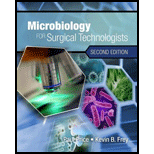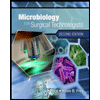
Concept explainers
To analyze:
The
Introduction:
Parasitic infection is widespread in different regions. Children are more prone to parasitic attacks. Parasitic infections have been seen frequently in developing countries like Asia, and Africa. The major causes of parasitic infections are poor hygiene, living style and socioeconomic background.
Explanation of Solution
Parasitic infections are very common in developing countries. The common parasites are protozoa and helminths. The protozoan parasites include Entamoeba, Giardia intestinalis, and plasmodium and helminths are roundworms, and ectoparasites like ticks, and mites. In severe infection surgical removal is needed.
Amoebiasis is caused by E. hystolytica. It causes liver abscesses when enters the liver. Contamination occurs by contaminated food and water. Amoebiasis is treated with drugs. In severe cases such as amoebic colitis, surgery is required. This might be required when drugs are ineffective.
Helminthic infection is rampant in African children. A good example is Ascariasis caused by Ascaris lumbricoid. This parasite invades the intestine. Symptoms are malnutrition, growth retardation, and abdominal pain. In case of biliary obstruction, open surgery is required. It is for the removal of a large number of worms from the intestine and hepatic cells. The worms are extracted from the affected organelles.
Blood flukes are trematode worms. It causes schimatosomiasis. It is a chronic parasitic infection. When the worm attacks the bladder, cause carcinoma surgery can remove the parasite. In this condition, drugs fail to treat the parasitic infection.
Other diseases such as Fasciola hepatica, Fasciola gigantic, and biliary disease require surgery to extract the mass invasion. In parasitic infection prevention can avoid surgery. Good hygienic conditions, proper sanitary habits, and good food and water can stop the parasitic infection.
Parasitic infections are more frequent as they are spread by various zoonotic vectors. In severe cases, surgical removal is required to solve the pathological condition.
Want to see more full solutions like this?
Chapter 10 Solutions
Microbiology for Surgical Technologists (MindTap Course List)
- Using quail and chick embryos, quail-specific antibody and fluorescent tissue-specific antibodies, design an experiment where you investigate the tissues the cranial neural crest can give rise to. What are four derivatives of the cranial neural crest that you expect to see in the resulting chimeric embryos?arrow_forwardDoes the neural crest have to undergo epithelial to mesenchymal transition prior to migration through the developing embryo? Does the neural crest differentiate into different cell types based on their axial position along the anterior and posterior axis?arrow_forwardUsing quail and chicken embryos, what kind of experiment would you conduct to test if rib forming somites have their axial identity specified before segmentation? How do we know this phenotype is due to axial identity being specified before segmentation and not due to our experimental method?arrow_forward
- 8. Aerobic respiration of a 5 mM solution of tripeptide that is composed of the following three amino acids; alanine, leucine and isoleucine. Alanine breaks down to pyruvate, leucine breaks down to Acetyl-CoA and isoleucine breaks down to succinyl-CoA. Alanine NADH FADH2 OP ATP SLP ATP Total ATP Leucine Isoleucine Totals Show your work using dimensional analysis here: 4arrow_forward9. Aerobic respiration of one lipid molecule. The lipid is composed of one glycerol molecule connected to two fatty acid tails. One fatty acid is 12 carbons long and the other fatty acid is 18 carbons long in the figure below. Use the information below to determine how much ATP will be produced from the glycerol part of the lipid. Then, in part B, determine how much ATP is produced from the 2 fatty acids of the lipid. Finally put the NADH and ATP yields together from the glycerol and fatty acids (part A and B) to determine your total number of ATP produced per lipid. Assume no other carbon source is available. fatty acids glycerol 18 carbons 12 carbons 0=arrow_forwardinfluences of environment on the phenotype.arrow_forward
- What is the difference between codominance and phenotypic plasticity?arrow_forwardExplain the differences between polygeny and pleiotropy,arrow_forwardIf using animals in medical experiments could save human lives, is it ethical to do so? In your answer, apply at least one ethical theory in support of your position.arrow_forward
- You aim to test the hypothesis that the Tbx4 and Tbx5 genes inhibit each other's expression during limb development. With access to chicken embryos and viruses capable of overexpressing Tbx4 and Tbx5, describe an experiment to investigate whether these genes suppress each other's expression in the limb buds. What results would you expect if they do repress each other? What results would you expect if they do not repress each other?arrow_forwardYou decide to delete Fgf4 and Fgf8 specifically in the limb bud. Explain why you would not knock out these genes in the entire embryo instead.arrow_forwardYou implant an FGF10-coated bead into the anterior flank of a chicken embryo, directly below the level of the wing bud. What is the phenotype of the resulting ectopic limb? Briefly describe the expected expression domains of 1) Shh, 2) Tbx4, and 3) Tbx5 in the resulting ectopic limb bud.arrow_forward
 Microbiology for Surgical Technologists (MindTap ...BiologyISBN:9781111306663Author:Margaret Rodriguez, Paul PricePublisher:Cengage LearningSurgical Tech For Surgical Tech Pos CareHealth & NutritionISBN:9781337648868Author:AssociationPublisher:CengageEssentials Health Info Management Principles/Prac...Health & NutritionISBN:9780357191651Author:BowiePublisher:Cengage
Microbiology for Surgical Technologists (MindTap ...BiologyISBN:9781111306663Author:Margaret Rodriguez, Paul PricePublisher:Cengage LearningSurgical Tech For Surgical Tech Pos CareHealth & NutritionISBN:9781337648868Author:AssociationPublisher:CengageEssentials Health Info Management Principles/Prac...Health & NutritionISBN:9780357191651Author:BowiePublisher:Cengage- Case Studies In Health Information ManagementBiologyISBN:9781337676908Author:SCHNERINGPublisher:Cengage
 Comprehensive Medical Assisting: Administrative a...NursingISBN:9781305964792Author:Wilburta Q. Lindh, Carol D. Tamparo, Barbara M. Dahl, Julie Morris, Cindy CorreaPublisher:Cengage Learning
Comprehensive Medical Assisting: Administrative a...NursingISBN:9781305964792Author:Wilburta Q. Lindh, Carol D. Tamparo, Barbara M. Dahl, Julie Morris, Cindy CorreaPublisher:Cengage Learning





